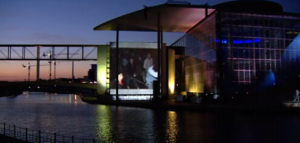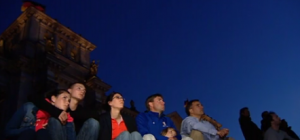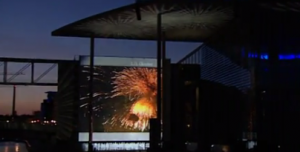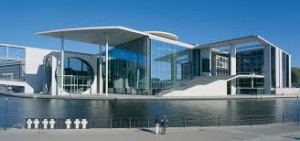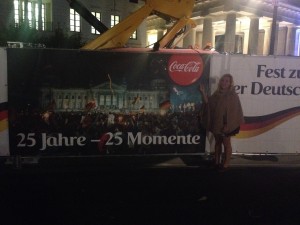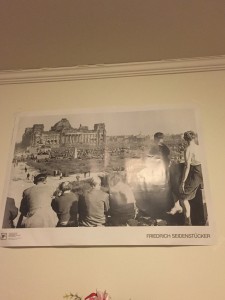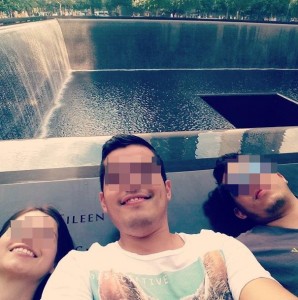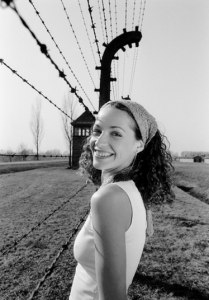Rather than creating a Bryn Mawr public history project, I am looking to an existing history project in Berlin.
“Vom Reichstag zum Bundestag”
Constructing a Public Historical Narrative for Reunified Germany
Looking to theories of film, history, spectacle, and architectural design, I hope to examine the space for film consumption in Berlin’s new government district as part of the political rhetoric of democracy as the inherently superior form of governing put forth by the German government. Berlin is a city rich with monuments—old and new— often ones that are mostly abstract and relying heavily on the power of metaphor. The buildings across the river from the Reichstag are prime examples of this type of new monument. Though these buildings are new, they serve similar functions as their older counterparts. Both old and new monuments for government districts use the power of spectacle to enhance a sense of national pride and unity. Government monuments also serve to root themselves within certain historical narratives.
The film and light show in Berlin’s government district functions to support a type of national pride and tell the correct version of German political history. This particular film focuses on the history of the Reichstag building from the late 19th century to today. The show uses old strategies of spectacle and collective-making and new technologies of film, light displays, and sound on modern architecture to give it a fresh feel and distance itself from historical uses of the same space in Berlin.
There are two main components that I would like to study: (1) the permanent aspects of the constructed space (the memorial, the buildings, and the steps) and (2) the temporary ones (light and film projections).
More info on the projections and the buildings:
Since 2012, from the end of June until the celebrations on German Unity Day on October 3rd there is a light show and film projected onto the Marie-Elisabeth Lüders House in Berlin along the Spree River tracing the story of the Reichstag building from the late 19th century to today. The film projected is titled “Dem deutschen Volke — Eine parlamentarische Spurensuche. Vom Reichstag zum Bundestag,” which can be translated as “For the German people – Tracing the Parliament. From Reichstag to Bundestag.” The film is created by the government and is in German with English and German subtitles, indicating that the film is also for a non-German speaking, probably tourist audience.
The Marie-Elisabeth-Lüders House, completed in 2003, with the Federal Chancellory and Paul-Löbe-House form part of “Federal Row” designed as an architectural symbol of German unity. A bridge across the Spree connects the Marie-Elisabeth-Lüders House and Paul-Löbe-House, each on either side of the former wall, symbolizing the connection between East and West Berlin and also connecting the past to the present with the naming of the buildings. Below the Lüders House there is a memorial to the Berlin Wall.
Here is a Map of Government District to get a better sense of the space.

